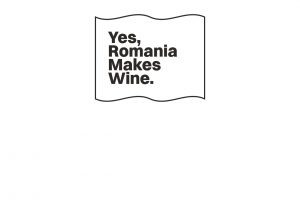In partnership with Wines of Romania
Romania is at last starting to gain international recognition for the thrilling quality of its best wines. Deserved and long overdue acknowledgement for a country with a unique viticultural heritage and a surfeit of unique grape varieties producing wines with singular flavours. Some of them can trace their lineage back to Ancient Greece, the cradle of modern wine culture as we know it.
Indeed, the southeastern European country is no stranger to the vine. The earliest evidence of the existence of viticulture in Romania are vineyard tools found on the Catalina Hill, in Cotnari, dating back to the 5th century BC. After the Greeks established a thriving wine scene in the 7th century BC, a succession of European powers – including the Romans and Byzantines – produced aromatic sweet wines in clay amphorae, prized both locally and as exports. The Roman poet Ovid extolled the virtues of Romanian viticulture in his later writings, despite being banished to the port of Constanța, on the Black Sea, by Emperor Augustus in AD 8. Not long after that, chaos descended when the Western Roman Empire fell and, like in other of the territories under its domain, viticulture was put on the back burner as rival armies fought over the spoils.

An Ancient Greek ceramic vase
During the Middle Ages however, a dramatic revolution took place in the vineyards of Romania. Christian institutions, particularly monasteries, took an active role in the cultivation of the vine, building centres of worship and meditation in the Moldavia and Muntenia regions, such as the Dealu Monastery in Târgoviște. The country’s area under vine increased significantly in the 1400s and Romania established itself as the class act of the Balkans, beginning to understand the diversity, uniqueness and potential of its terroirs.
Exports to neighbouring countries and indeed Western Europe rose off the back of sustained investment and endless proselytising – not least from the aristocracy. But although white wines were more highly regarded at the time (such as the sweet Cotnari, a rival to Hungary’s Tokaji), Romania’s red varieties became the latest fashion in the 18th century.
Beyond the Belle Époch
This burgeoning excitement reached fever pitch in the 1800s, as Romania became a pan-European force in exceptional wines and fantastic terroirs. As the nation’s economy boomed many new wine cellars were built, while new grape varieties were introduced to the ancient soils of the Balkans. Romanian wines coming from key wine regions like Transylvania and the Moldovan Hills became very adept at winning medals in international competitions. Meanwhile, Romania’s area under vine exceeded 300,000 hectares in 1893 – the country’s future as a major exporter seemed assured.

Map of Dacia, 1624
Unfortunately, severe political turmoil and the arrival of the phylloxera blight led to a sustained period of decline; the outbreak of two World Wars saw many vineyards and wineries abandoned or destroyed. The most significant damage occurred after 1947, when Communist forces founded the Romanian People’s Republic and wine production became highly industrialised to maximise productivity, with many indigenous varieties grubbed up to make space for high-yielding hybrids. Forced collectivisation and a great replanting programme in the 1960s did the country’s global reputation no favours – Soviet-influenced mass-production methods and a lack of funds producing expressionless low-quality wines. Thankfully, Romania’s long winemaking tradition was revived after a return to democracy in 1989, playing an important role in the country’s transition, as a modern democracy, to the 21st century.
Resurgence and renewal
To say that much has changed over the past 35 years is a terrific understatement. The decades since the fall of Communism have witnessed a decline of state firms and the emergence of new family-owned wineries, both artisan and large scale. The last 15 years in particular have been truly revolutionary. Key stakeholders have invested much capital and expertise into improved cellar and vineyard equipment, which has since translated into the production of quality, terroir-driven wines across the country’s many regions and terroirs.

Grape harvest at Cotnari
Moreover, EU membership (Romania joined in 2007) helped to fund a major replanting scheme, replacing hybrids with both international and indigenous grape varieties. This investment, backed by international technical expertise, has raised standards across the board. Today, there are approximately 180,000 hectares planted, of which 34,000 qualify for DOC status. Thus, an ancient winemaking culture has, like a phoenix, emerged from the ashes and morphed into an up-and-coming producer. Romania is the 6th largest wine producer in Europe, with around 500 wineries making 4.6 million hectolitres in 2022. The question is what happens next?
Unique and diverse offering
Hand-made, single-site, low-intervention wines are the future of Romanian prosperity, made in eight diverse regions across the country. There is also a wealth of indigenous grapes to choose from, including Fetească Regală, Fetească Albă, Fetească Neagră, Negru de Drăgășani and Zghihară de Huși. Meanwhile, the variety of terroirs and mesoclimates, yielding an equally diverse array of wines, is staggering. But of equal importance is the cultural revolution happening in leading wine markets, such as the UK and the US. Today’s consumers, tired of the same ubiquitous grape varieties, increasingly seek new experiences, flavours and stories – they want to be moved out of their comfort zones. With a vine heritage as regionally varied as all of its other assets, Romania is in a unique position to cater to this growing demand.








